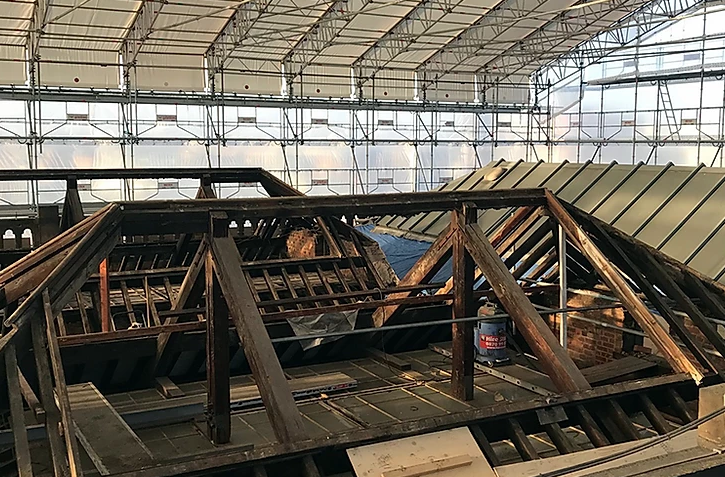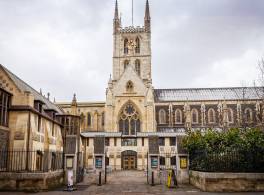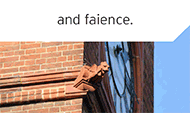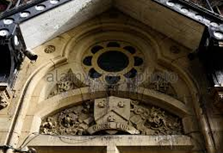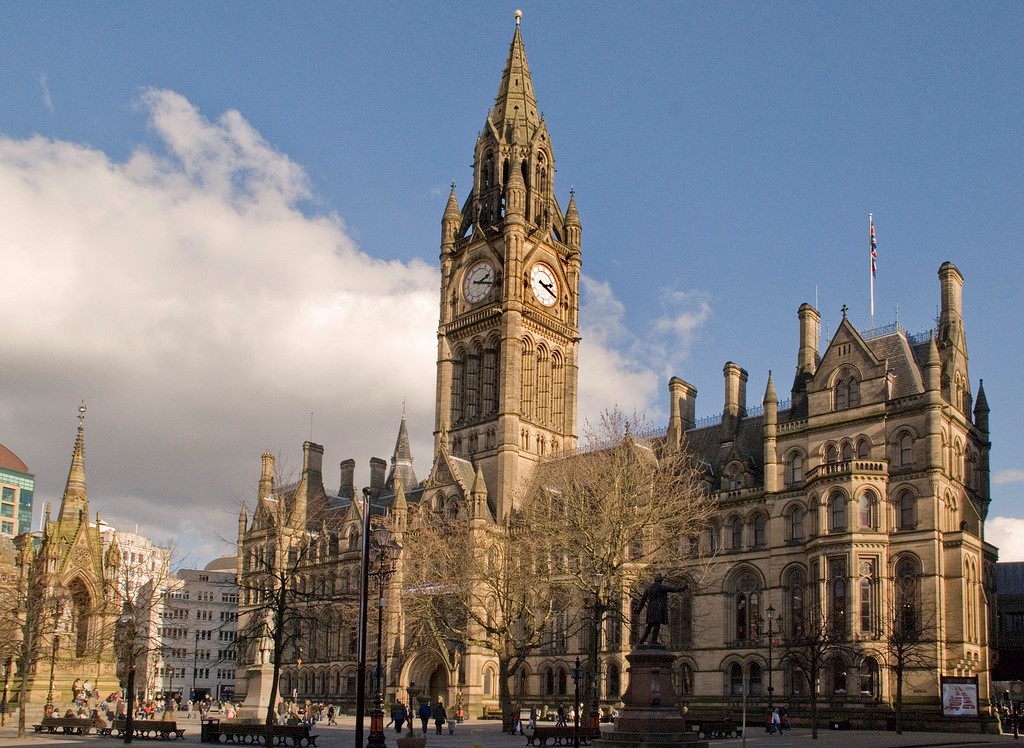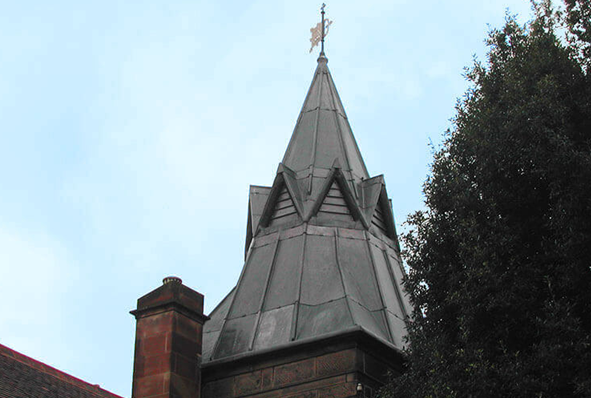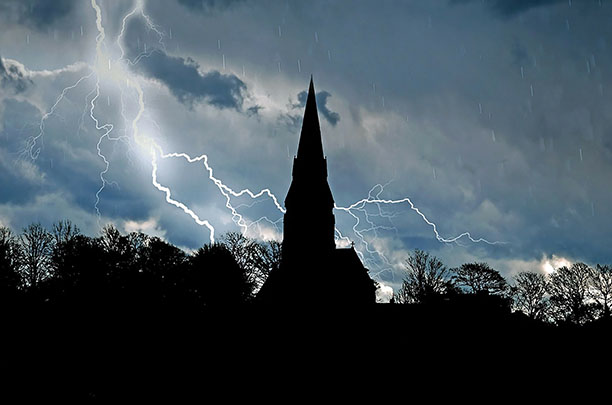Heritage Roofing
Heritage roofing - maintaining our iconic buildings
The UK is home to some of the most iconic buildings in the world, from stunning churches and cathedrals to historic stately homes. Each and every one of these remarkable feats of architecture requires regular maintenance to ensure they remain in the very best condition, allowing them to be enjoyed for generations.
Cathedral Care
Restoration and upkeep of cathedrals
There are some 42 Anglican cathedrals in the UK, not to mention 20 or so Catholic cathedrals. Cathedrals form the most important collection of historic buildings in England. The largest and most ancient are internationally famous, the smallest are usually among the most significant buildings in their region and even the most recent are architectural masterpieces.
Master Craftsmen
Championing our heritage with modern craftsmanship
Twenty years ago, English Heritage (now Historic England) published its first-ever Register of Buildings at Risk across England, which featured nearly 2,000 buildings and monuments that were ‘neglected, broken and unloved’. Recently Historic England was delighted to announce that over two-thirds of those buildings were now safe, in both urban and rural areas right across the country.
Traditional Lime
Lime: it’s better for buildings – and for the environment
It is now fairly well known that cement is not good for old buildings and that lime mortar should be used. But why? What are the advantages and what are the disadvantages? In order to begin to answer those questions it is necessary to understand the nature of traditional building, the process by which buildings used to be built, and how it differs from modern construction, the process by which we build today.
Audio Visual
Audio visual equipment in church buildings
This guidance is issued by the Church Buildings Council under section 55(1)(d) of the Dioceses, Mission and Pastoral Measure 2007. As it is statutory guidance, it must be considered with great care. The standards of good practice set out in the guidance should not be departed from unless the departure is justified by reasons that are spelled out clearly, logically and convincingly.
Read More...
CRE Events
Exhibitors enthuse over the CRE experience
By 4pm on the first day of CRE 24 at the Marshall Arena in Milton Keynes, exhibitors Chris and Kim Dunphy had already had so many helpful and detailed conversations with visitors that they were “completely talked out”.
Insurance
You need to ensure that reasonable precautions are in place at your church to keep it safe for those who use it. To do this, you need to think about what might cause harm to people.
You will then need to decide if the precautions already in place are adequate. If they are not, you may need to identify further action to prevent any danger. When done formally, this is known as a risk assessment.
Church Maintenance
Church maintenance and repair: Calendar of Care
Just as prevention is always better than cure, maintenance is preferable to major repairs. But, such repairs may not always be avoidable. Church Care offers a monthly guide in our coming issues Starting in Spring
We can help you understand the common problems and areas that need your special attention, and give you tips for regular maintenance schemes.
Pest Control
Michael Palin warns of pest threat to churches
Michael Palin is supporting the future of the UK’s historic churches and chapels with a voiceover for a new animated film. The 80 second animation, produced for the National Churches Trust, highlights why churches are some of the nation’s best loved buildings.
Town Halls
The history of the great Victorian Town Halls of Northern England
From industrial squalor to civic pride, the story behind some of the most impressive buildings of the North involve a unique mix of economics, grand designs and noble sentiments within communities.
Lead Roofing
Lead is one of the oldest materials in the roofing industry and is still commonly used throughout the world today.
Lead roofing is a traditional roofing method which has been used in the industry for hundreds of years, and is therefore proven to be extremely reliable. Lead roofing, and sand-cast lead, in particular is ideal for old buildings such as churches or historical renovations, whereas milled lead roofing is a mass-produced alternative, used for precision and accuracy in homes and commercial buildings alike.
Lightning Protection
When lightning strikes are you protected against this act of God?
The issue of lightning protection in churches is one that has exercised this publication for many years. In this four-part series of spotlights on the issue we will be revisiting various aspects of the subject, beginning with an overview of current thinking.
SEARCH OUR DIRECTORY
St Edmundsbury Cathedral, Bury St Edmunds, Suffolk
1) The New Organ Project – January to November 2010
The new Cathedral organ was built by Harrison & Harrison of Durham in 2010. Its predecessor had become very unreliable and outdated, and struggled to project sound into the body of the building.
In January 2010 work started to remove the old instrument. Some pipework was retained and given a thorough overhaul at the organ builders’ factory, but everything else is entirely new. The rebuild began in June and carried on throughout the summer months, much to the interest of the Cathedral’s many visitors.

Two spectacular new cases have been created, based on designs by Alan Rome and Stephen Dykes Bower and the colour scheme realised by the architect John Bucknall. The cases were constructed by Penny’s Mill and then delivered to the Cathedral where they were decorated in the Lady Chapel by Campbell Smith & Co. Again this caused much interest among visitors who could see this fine work being executed at ground level.
The new instrument was used for the first time on Advent Sunday 2010. It has four manuals and 59 speaking stops, with over 3,500 pipes. The longest pipes are 32 feet in length, whilst
those that produce the highest sounds are a fraction of an inch long. The instrument contains about 30km of wiring and weighs approximately 16 tonnes!
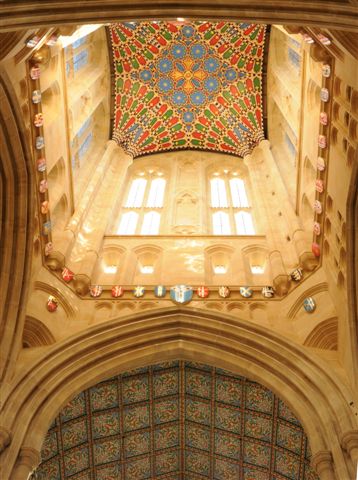
Many, many people have given very generously, and several charitable bodies have made donations, to make the creation of this remarkable organ possible; donations ranging from those of a few pounds to gifts and legacies of several hundred thousand pounds. We are immensely grateful to them all.
t Edmundsbury Cathedral
Next year sees a series of concerts and events to mark the arrival of the new organ. All events (except the last one) are admission free (with retiring collection).
Sunday 9 January 2011 at 5.00 p.m.
Messiaen’s “La Nativité du Seigneur” – this annual performance of nine seasonal pieces is part of our observance of Christmastide.
Saturday 5 March from 2.00 p.m.
Education event involving WOOFYT (wooden one-octave organ for young technologists).
Saturday 5 March at 4.00 p.m.
Illustrated Lecture — “Behind the Pipes”: watch and listen to a guided tour of the organ, shown on the TV screens in the Nave as David Humphreys and I show you the organ from within. Then later that day:
Saturday 5 March at 5.00 p.m.
Nicolas Kynaston, internationally-acclaimed concert organist gives the official Inaugural Recital
Saturday 16 April at 5.00 p.m.
Michael Bawtree (Assistant Director of Music 1999-2004)
Saturday 18 June at 5.00 p.m.
David Humphreys
Saturday 16 July at 5.00 p.m.
James Thomas
Saturday 20 August at 5.00 p.m.
Scott Farrell (Assistant Director of Music 1993-98)
Saturday 15 October at 5.00 p.m.
Jonathan Vaughn (Assistant Director of Music 2004-2007)
Saturday 12 November at 7.00 p.m.
David Briggs improvises an accompaniment to a screening of the classic silent film “The Phantom of the Opera” (1925). Not to be missed!
2) Treasury Project
The Millennium Project at St Edmundsbury Cathedral to create a Gothic Lantern Tower, new cloisters, chapel, north transept gallery not to mention the RIBA award-winning decorated vaulted ceiling and a new organ with decorated cases in the gothic style, also saw the design and creation of a crypt, beneath the new chapel, which is itself a fine piece of architecture with its impressive floor of hand-shaped brick tiles, characteristic of many mediaeval churches in Suffolk.
A specific use for the crypt had not previously been considered but following the re-ordering of some other rooms in the Cathedral complex, the crypt was identified as the ideal location for a new treasury. A working group was formed with representation from the Chapter, the Fabric Advisory Committee and relevant members of staff. This group developed a brief for the new treasury that it should articulate the Cathedral’s origins within the context of the mediaeval abbey at Bury St Edmunds, express the transition of the Cathedral from parish church to Mother Church of the Diocese of St Edmundsbury and Ipswich (in 1914), and emphasise that the Cathedral is a working church.
This will be achieved through a judicious use of the Cathedral’s existing collection of treasures together with artefacts which relate to abbey, Cathedral and region, borrowed from other collections. The design specification will meet the requirements of the National Security Advisor for Museums for Grade 3 certification (the highest level of security) such that items of national importance may be borrowed from national collections under Government indemnity.
This will provide access for members of the local community as well as visitors from far and wide to elements of our heritage that might otherwise be inaccessible to them. Items from the Cathedral’s own collection will be used regularly in worship, thus avoiding the concept of static museum in favour of living heritage. Displays will rotate, giving local people cause to return to the treasury from time to time.
Special exhibitions with particular themes will also be mounted: the 400th anniversary of the King James Authorised Version of the Bible in 2011 and an international conference on St Edmund studies organised by the University of East Anglia in 2012 have already been identified as excellent contexts for such exhibitions. The Treasury will also play a significant part in the celebrations to mark the centenary of the Diocese and Cathedral in 2014.
The treasury will include, at its entrance, an “interpretation zone” which will interpret what visitors are about to see through language and images which speak to everyone, from expert visitor to school child. The exhibits will be housed in a controlled atmosphere in display cabinets of the highest quality. Although the treasury is in a crypt, equal access is included in the scheme.
Tenders have been sought from three local companies and one of the principal museum display designers (who have worked at the British Museum and the Royal Academy amongst other places) and the Chapter, the governing body of the Cathedral, has identified the most competitive contractor who will also provide the best quality of work in this important historic building. We are now in the process of making applications to relevant grant-making trusts. Our ability to raise funds successfully has been proved many times in recent years in relation to the projects already undertaken here. Indeed, since November 2008, we have raised in excess of £1 million for our various capital projects.
The resulting Crypt Treasury will be both an informative and inspiring experience for visitors while also providing opportunities for education and access for many people as well as being a functional space for a working environment. We aim to bring as many people as possible into contact with items of national importance in a unique setting, free of charge to all comers.
Anyone interested is supporting this project should contact; Revd Canon Michael Hampel, Sub-Dean and Precentor on 01284 748724 or This email address is being protected from spambots. You need JavaScript enabled to view it.
3) Equal Access Project
Access to St Edmundsbury Cathedral at the principal public entrance involves the descent of three steps inside the porch of great architectural significance which was created by Stephen Dykes Bower in the 1960s. All other doors into the Cathedral also involve steps.
During the twelve years of the great Millennium Project, which saw the creation of the Gothic Lantern Tower, decorated vaulted ceiling, new cloisters, chapel, crypt, and north transept gallery, equal access has been a major concern. In addition, a major new organ project with decorated cases in the gothic style is nearing completion.
All of this has caused a massive increase in visitors to Bury St Edmunds and to the Cathedral and we are delighted that planning permission has finally been given to the adaptation of the porch to provide equal access from the street directly into the church building.
Once inside the church, an existing lift in the north transept enables people in buggies, wheelchairs and mobility scooters to descend into the cloisters and continue their visit to the Cathedral Centre where a lift provides access between ground and first floor. The improvements to the porch will thus ensure that every part of the Cathedral’s plant is accessible to all members of the public.
The design and approval of this project has taken many years to perfect because of the highly sensitive environment in which the adaptations will be undertaken. The entrance porch to the Cathedral is regarded as one of the gems of Dykes Bowers’s work. The Cathedral’s architect, Philip Orchard, of the Whitworth Co Partnership, a local firm, has been commended by the Cathedrals Fabric Commission for England for the imaginative and sensitive design for achieving this important work to provide equal access.
At the same time, glass doors will be installed from the porch into the nave, designed to be easily opened by all visitors and designed also to maximise heat retention in the church. Three other principal doors around the church will also be modified slightly to maximise heat retention. As a result, the project also plays a part in reducing the Cathedral’s carbon footprint.
Tenders have been sought from three local companies and the Chapter, the governing body of the Cathedral, has identified the most competitive contractor who will also provide the best quality of work in this important historic building. The total cost of this project is £67,816, of which we have so far raised £12,000.
We have approached individual donors, the Friends of St Edmundsbury Cathedral, and Suffolk County Council and these bodies have shown considerable interest in the project and have pledged funds for it. We aim to build on this good start by making a number of applications to relevant grant-making trusts.
We believe passionately that the remarkable and highly significant architectural work which has been achieved at St Edmundsbury Cathedral over the last twelve years should be accessible to everyone both as an opportunity to enjoy this great asset to the local community and, indeed, to the region but also as a pathway to greater understanding of the achievements of craftsmen and artists of national repute.
Anyone interested is supporting this project should contact; Revd Canon Michael Hampel, Sub-Dean and Precentor on 01284 748724 or This email address is being protected from spambots. You need JavaScript enabled to view it.













